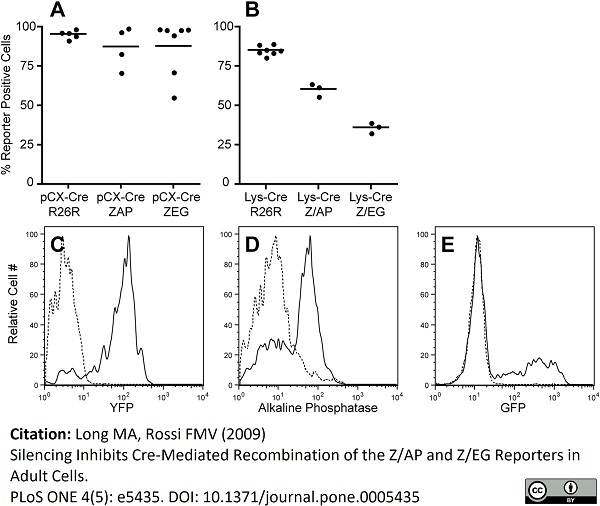Placental Alkaline Phosphatase antibody | H17E2

Mouse anti Human Placental Alkaline Phosphatase
- Product Type
- Monoclonal Antibody
- Clone
- H17E2
- Isotype
- IgG1
- Specificity
- Placental Alkaline Phosphatase
| Mouse anti Human placental alkaline phosphatase antibody, clone H17E2 recognizes human placental alkaline phosphatase, also known as alkaline phosphatase Regan isozyme, Alkaline phosphatase, placental type or Placental alkaline phosphatase 1. Placental alkaline phosphatase is a 535 amino acid ~67 kDa GPI-anchored transmembrane glycoprotein bearing a 22 amino acid signal peptide and a 29 amino acid pro-peptide region, cleaved to produce the mature form. Placental alkaline phosphatase is expressed in trophoblast cells of normal human placenta (Travers et al. 1984), in seminomas (Lange et al. 1982)and in ovarian carcinoma (Tholander et al. 1990). Mouse anti Human placental alkaline phosphatase antibody, clone H17E2 has been widely used for immunolocalization of germ cell tumors and may also be used for the measurement of soluble placental alkaline phosphatase by ELISA. |
- Target Species
- Human
- Product Form
- Purified IgG - liquid
- Preparation
- Purified IgG prepared by affinity chromatography on Protein A from tissue culture supernatant.
- Buffer Solution
- Phosphate buffered saline
- Preservative Stabilisers
- 0.09% sodium azide (NaN3)
- Carrier Free
- Yes
- Immunogen
- Placental membrane.
- Approx. Protein Concentrations
- IgG concentration 1.0 mg/ml
- Fusion Partners
- Spleen cells from immunised BALB/c mice were fused with cells of the mouse NS1 myeloma cell line.
- Regulatory
- For research purposes only
- Guarantee
- 12 months from date of despatch
Avoid repeated freezing and thawing as this may denature the antibody. Storage in frost-free freezers is not recommended.
| Application Name | Verified | Min Dilution | Max Dilution |
|---|---|---|---|
| ELISA | |||
| Flow Cytometry | 10ug/ml | ||
| Immunohistology - Frozen 1 | |||
| Immunohistology - Paraffin |
- 1The epitope recognised by this antibody is reported to be sensitive to formaldehyde fixation and tissue processing. Bio-Rad recommends the use of acetone fixation for frozen sections.
- Flow Cytometry
- Use 10μl of the suggested working dilution to label 106 cells in 100μl
- Histology Positive Control Tissue
- Human placenta, seminoma
| Description | Product Code | Applications | Pack Size | List Price | Your Price | Quantity | |
|---|---|---|---|---|---|---|---|
| Mouse IgG1 Negative Control | MCA928 | F | 100 Tests |
|
Log in | ||
| List Price | Your Price | ||||||
|
|
Log in | ||||||
| Description | Mouse IgG1 Negative Control | ||||||
References for Placental Alkaline Phosphatase antibody
-
Travers, P. & Bodmer, W. (1984) Preparation and characterization of monoclonal antibodies against placental alkaline phosphatase and other human trophoblast-associated determinants.
Int J Cancer. 33 (5): 633-41. -
Epenetos, A.A. et al. (1984) An immunohistological study of testicular germ cell tumours using two different monoclonal antibodies against placental alkaline phosphatase.
Br J Cancer. 49 (1): 11-5. -
Tucker, D.F. et al. (1985) Serum marker potential of placental alkaline phosphatase-like activity in testicular germ cell tumours evaluated by H17E2 monoclonal antibody assay.
Br J Cancer. 51 (5): 631-9. -
Fisken, J. et al. (1989) Serum placental-like alkaline phosphatase (PLAP): a novel combined enzyme linked immunoassay for monitoring ovarian cancer.
J Clin Pathol. 42 (1): 40-5. -
Kalofonos, H.P. et al. (1990) Immunolocalisation of testicular tumours using radiolabelled monoclonal antibody to placental alkaline phosphatase.
J Nucl Med Allied Sci. 34 (4): 294-8. -
Orozco AF et al. (2009) Placental release of distinct DNA-associated micro-particles into maternal circulation: reflective of gestation time and preeclampsia.
Placenta. 30 (10): 891-7. -
Long, M.A. & Rossi, F.M. (2009) Silencing inhibits Cre-mediated recombination of the Z/AP and Z/EG reporters in adult cells.
PLoS One. 4:e5435. -
Semenov, O.V. et al. (2010) Multipotent mesenchymal stem cells from human placenta: critical parameters for isolation and maintenance of stemness after isolation.
Am J Obstet Gynecol. 202:193.e1-193.e13.
View The Latest Product References
-
Carter, C.C. et al. (2010) HIV-1 infects multipotent progenitor cells causing cell death and establishing latent cellular reservoirs.
Nat Med. 16: 446-51. -
Wonderlich, E.R. et al. (2011) ADP Ribosylation Factor 1 Activity Is Required To Recruit AP-1 to the Major Histocompatibility Complex Class I (MHC-I) Cytoplasmic Tail and Disrupt MHC-I Trafficking in HIV-1-Infected Primary T Cells.
J Virol. 85: 12216-26. -
Dankers, P.Y.W. et al. (2015) Convenient formulation and application of a supramolecular ureido-pyrimidinone modified poly(ethylene glycol) carrier for intrarenal growth factor delivery
European Polymer Journal. 72: 484-93. -
Göhner, C. et al. (2015) A New Enzyme-linked Sorbent Assay (ELSA) to Quantify Syncytiotrophoblast Extracellular Vesicles in Biological Fluids.
Am J Reprod Immunol. 73 (6): 582-8. -
Fitzgerald, W. et al. (2018) Extracellular vesicles generated by placental tissues ex vivo: A transport system for immune mediators and growth factors.
Am J Reprod Immunol. 80 (1): e12860.
- Synonyms
- PLAP
- RRID
- AB_2226283
- UniProt
- P05187
- Entrez Gene
- ALPP
- GO Terms
- GO:0005886 plasma membrane
- GO:0004035 alkaline phosphatase activity
- GO:0016021 integral to membrane
- GO:0046872 metal ion binding
- GO:0009986 cell surface
- GO:0031225 anchored to membrane
MCA2091
If you cannot find the batch/lot you are looking for please contact our technical support team for assistance.
Please Note: All Products are "FOR RESEARCH PURPOSES ONLY"
View all Anti-Human ProductsAlways be the first to know.
When we launch new products and resources to help you achieve more in the lab.
Yes, sign me up